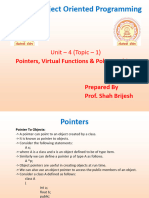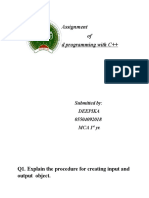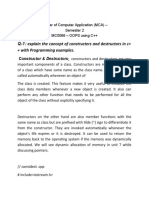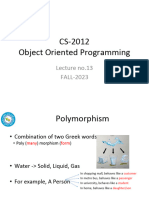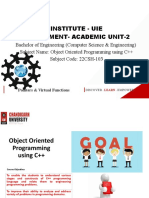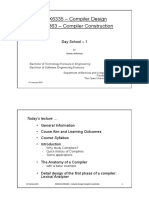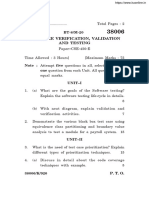0% found this document useful (0 votes)
13 views48 pagesC++ Unit - 3
This document covers key concepts in Object-Oriented Programming (OOP) including pointers, virtual functions, polymorphism, and file management in C++. It explains the use of pointers for dynamic binding, the role of virtual functions in achieving runtime polymorphism, and the importance of managing console I/O operations using C++ stream classes. Additionally, it discusses pure virtual functions and virtual destructors, emphasizing their significance in abstract classes and proper memory management.
Uploaded by
Aditi MehtaCopyright
© © All Rights Reserved
We take content rights seriously. If you suspect this is your content, claim it here.
Available Formats
Download as PPTX, PDF, TXT or read online on Scribd
0% found this document useful (0 votes)
13 views48 pagesC++ Unit - 3
This document covers key concepts in Object-Oriented Programming (OOP) including pointers, virtual functions, polymorphism, and file management in C++. It explains the use of pointers for dynamic binding, the role of virtual functions in achieving runtime polymorphism, and the importance of managing console I/O operations using C++ stream classes. Additionally, it discusses pure virtual functions and virtual destructors, emphasizing their significance in abstract classes and proper memory management.
Uploaded by
Aditi MehtaCopyright
© © All Rights Reserved
We take content rights seriously. If you suspect this is your content, claim it here.
Available Formats
Download as PPTX, PDF, TXT or read online on Scribd
/ 48






